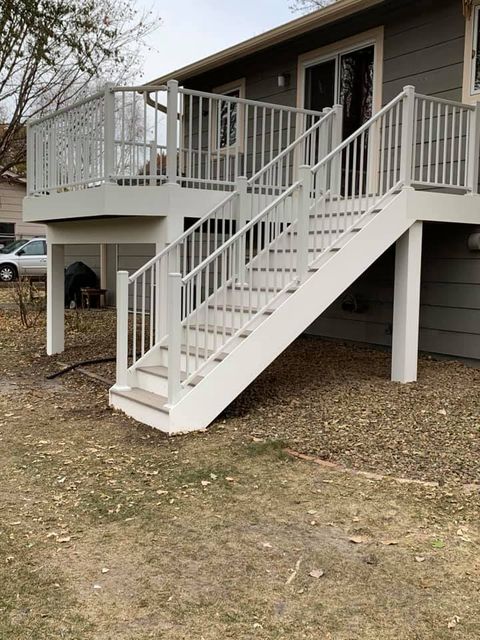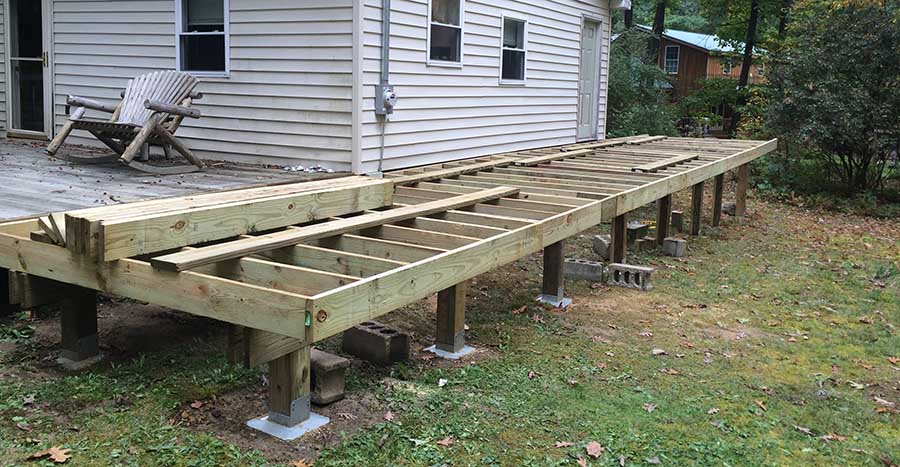Specialist Tips for Installing Deck Footings to Support Your Outdoor Area
When it comes to constructing a deck, among the most important aspects to think about is the setup of appropriate footings. These footings are the structure whereupon your exterior room will certainly relax, offering stability and support for years to find. However what precisely does it take to mount deck grounds properly? In this discussion, we will discover skilled tips and methods that can help guarantee a long lasting and effective deck installment. From selecting the appropriate kind of grounds to avoiding common errors, we will certainly offer you with the understanding and insights you need to confidently embark on your deck-building journey. So, let's dive right in and uncover the trick to a lasting and solid exterior space.
Significance of Correct Deck Footings
Correct deck grounds are vital for guaranteeing the stability and longevity of your outside space. Without solid and effectively mounted grounds, your deck may become unsteady, leading to safety and security risks and pricey repair services.

Along with stability, correct deck grounds likewise add to the durability of your outdoor space (Deck Footings). Footings that are made and constructed to stand up to the components and soil conditions in your area will certainly aid stop the deck from changing or working out with time. By ensuring the grounds are correctly sized and mounted, you can lessen the threat of damage to the deck framework, expanding its lifespan and reducing the requirement for costly repairs or substitutes

Selecting the Right Type of Grounds
When choosing the ideal kind of grounds for your deck, it is very important to consider variables such as soil conditions, neighborhood building regulations, and the general layout of your outside room. The type of footing you choose will play an important role in making sure the stability and long life of your deck.
One usual sort of footing is the concrete footing. Concrete grounds are appropriate for the majority of dirt conditions and supply superb assistance for decks. They are usually set up below the frost line to prevent shifting and clearing up as a result of freezing and thawing cycles. Another choice is helical piers, which are suitable for areas with unpredictable soil or high water tables. These piers are screwed into the ground and offer strong support for the deck.
Sometimes, you may need to use specific footings, such as heap grounds or deep foundations, if you are constructing a multi-level or large deck. These grounds are developed to distribute the weight of the deck over a bigger area, ensuring stability and stopping settling or sinking.
Before selecting a sort of footing, it is vital to consult local building regulations and laws to make certain conformity. Additionally, consider the style and meant use of your exterior area. Elements such as the size, shape, and load-bearing needs of your deck will influence the kind of footing that is most appropriate.
Preparing the Ground for Footing Installation
To appropriately prepare the ground for footing installation, it is vital to evaluate the dirt conditions and take required actions to make sure security and sturdiness of the deck. The initial step is to excavate the location where the footings will be mounted.
Once the area has actually been dug deep into, the next step is to small the dirt. This can be done utilizing a plate compactor or by utilizing a hand tamper. Condensing the dirt aids to get rid of any kind of voids or air pockets, which can cause resolving and instability over time.
After condensing the dirt, it is essential to lay a layer of crushed rock or smashed rock at the end of the excavation. This will supply water drainage and help to stop water from pooling around the grounds, which can lead to erosion and instability.
Step-by-Step Guide to Setting Up Deck Footings
After appropriately preparing the ground for footing installment, the next step is to begin the process of installing deck footings. This step-by-step overview will offer you with a clear understanding of exactly how to his response set up deck footings for your outdoor room.
Identify the location: Begin by marking the settings of the deck footings using stakes and string. Make certain that the areas straighten with the layout and format of your deck.
Dig the openings: Utilize a blog post opening miner or an auger to dig the holes for the footings. The depth and diameter of the holes should remain in conformity with neighborhood building regulations and the details needs of your deck layout.
Degree the holes: Use a degree to make certain that the openings are dug to the appropriate depth and are degree with each other. (Deck read review Footings)
Include gravel: Place a layer of crushed rock at the end of each opening to enhance drainage and prevent the wood from decaying.
Insert the grounds: Put the footings right into the openings, making certain they are level and plumb. Use a degree and a determining tape to guarantee accuracy.
Secure the grounds: Pour concrete right into the openings around the footings, filling them to the top. Make use of an article level to make certain the grounds stay level as the concrete collections.
Enable time for curing: Allow the concrete remedy according to the producer's guidelines prior to proceeding with the deck building and construction.
Usual Errors to Avoid Throughout Footing Installation
One crucial element to think about during the setup of deck footings is preventing common blunders that can jeopardize the security and durability of your exterior space. While deck grounds may appear like a easy and uncomplicated component of the construction procedure, overlooking specific variables can cause expensive fixings and potential security hazards down the line.

In addition, overlooking to mount proper water drainage steps can create water to build up around the grounds, resulting in rot, decay, and the eventual weakening of the deck's structure. Making use of the wrong kind of footing product or failing to properly secure the footings can jeopardize their architectural integrity.
To avoid these mistakes, it is vital to seek advice from a professional or comply with market standards to make sure correct ground setup. By doing so, you can guarantee the security and long life of your outdoor room, offering a enjoyable and safe atmosphere for many years ahead.
Verdict
Finally, mounting correct deck grounds is crucial for the stability and long life of your outdoor space. By choosing the best type of footings and properly preparing the ground, you can make sure a strong foundation for your deck. Complying with a step-by-step guide and staying clear of usual blunders throughout footing installment will certainly even more improve the longevity and safety and security of your deck.
Correct deck grounds are necessary for guaranteeing the security and durability of your outdoor space. The grounds offer as a connection in between the ground and the deck, permitting the weight of the deck and its passengers to be distributed evenly into the dirt.One typical type of footing is the concrete footing. Insert the grounds: Put the footings right blog here into the holes, making sure they are degree and plumb. Protect the footings: Put concrete into the openings around the grounds, filling them to the top.